#berlin post-ww2
Explore tagged Tumblr posts
Text
When the Skies Rained Freedom by Annette Oppenlander | Book Review ~ #HistoricalFiction @GoddessFish @annette.oppenlander #ColdWar #PostWW2Germany
When the Skies Rained Freedom by Annette Oppenlander | Book Review ~ #HistoricalFiction @GoddessFish @@annette.oppenlander #ColdWar #PostWW2Germany The novel successfully portrays the resilience of the human spirit in the face of adversity, making it not only a historical account but also a tale of love and courage. "When the Skies Rained Freedom" stands out as a poignant exploration of a pivotal moment in history, offering readers a glimpse into the lives of those who fought against the odds to secure freedom for West Berlin.
When the Skies Rained Freedom by Annette Oppenlander | Book Review ~ #HistoricalFiction @GoddessFish @annette.oppenlander #ColdWar #PostWW2Germany A book blog tour from Goddess Fish Promotions. Thank you to the author, publisher, and Marianne & Judy at Goddess Fish for providing me with the information for this tour. Book Details ~~~~~~~~~~~~~~~~~~~~ Excerpt from When the Skies Rained…

View On WordPress
#2023 Book Reviews#Berlin Airlift#Book Blog Tours#book review#Cold War Era#Goddess Fish Promotions#Post WW2
0 notes
Text
I received a question from Anon: "You spoke about FrUK toxicity, can you elaborate on what you meant by it?"

Because these two questions are essentially the same question, I will answer indirectly instead of directly.
Please note that all of the knowledge below is not cited, or comes from unofficial sources. Therefore, do not consider this as "fact". I only rely on this information along with my feelings to build my own headcanon, but I myself question their authenticity.
Dover's relationship is actually extremely toxic.
I once said that the more I read documents about the relationship between these two countries, the more I feel that the British deeply love France. Yes. But next to that love is an obsession and unpredictable calculation.
England's toxicity here is that England always wants France to depend on him, and at the same time, the only person with whom England agrees to share power in Europe is France. Because of that, England always deliberately nerfed France so that when France encountered difficulties, France could only rely on England. According to my knowledge, there were 3 times England made such a decision:
- Prussia was one of the countries sponsoring the French Revolution to create discord between France and Austria and defeat the French monarchy, thereby enhancing Prussia's position. The British Embassy in France knew all that but did nothing to stop it. Reason: England wanted Prussia to weaken the French monarchy. When the French monarchy is weak, England will support the French monarchy, then put its influence on the French monarchy, or become a dynasty (as England has openly wanted the French crown for so long). Having the French court, England could spread British influence throughout Europe. But England did not expect that the French Revolution would be so violent that it would behead a series of nobles and the French monarchy would completely collapse. Only when the French Revolution was truly successful did England turn to support the French mornachy, but it was too late to do anything.
- Whenever Britain feels that France is starting to become hegemonic on the continent, Britain will immediately gather an alliance against France (even though it is not affected as much as other countries on the continent). Specifically: the time of Napoleon.
- In de Gaulle's memoirs, he wrote that before World War II, Berlin was getting stronger and the risk of Germany going to war was in sight. But London ignored Berlin because London wanted when France and Germany went to war, France would depend on Britain. Uhm and later, the exiled French had to rely on England. That is why, when WW2 happened, de Gaulle argued with Churchill a lot and refused to compromise on post-war demands because de Gaulle did not want to fall into the same situation as (what he thought, I'm not saying this is true) London thought before, that is, to become into a French dependency on Britain.
That's why I call the most toxic person here England, not France, and every time I write about Arthur's feelings towards Francis, it's always: "He hates Francis when Francis shines brightly, because then Francis will look down on him. And he loves Francis when Francis is weak and defeated, because then Francis depends on him." = )))))) England is the one who will deliberately nerf France, not only because there is any security threat to England, but simply because England still wants to have the crown of France even when the French monarchy has collapsed because England really wants France to depend on England.
24 notes
·
View notes
Text

Bisexual media
Note: This should not be taken as a declaration of quality or my personal likings - I haven’t consumed all the media below. Not all of the shows focus on a bi protagonist but all do have at least one bi main character; a summary of main initial plot is provided. I will edit this post with updates intermittently.
TV Series
The Bisexual (2018) - Leila explores her attraction to men after identifying as a lesbian alongside her girlfriend and friends for the past decade, while her new roommate tries to get a grip on his relationship with a younger woman.
Black Mirror’s San Junipero - Yorkie meets Kelly in the strange setting of San Junipero. What’s the deal with this place, and what can make them stay?
Bob and Rose - Bob is gay. Rose has a boyfriend. Can I make it any more obvious? (I can - they find that they’re attracted to each other and deal with the implications and expectations of that.)
Crazy Ex-Girlfriend - Rebecca pursues her ex-boyfriend in the hopes of finding happiness. With a drastic move to West Covina, will she learn what happy feels like?
Cucumber - Henry’s life is upturned in one evening, then another, and then some more, while boyfriend Lance and new acquaintance Freddie come to terms with the present and the past.
Everything Now - Newly out of recovery from anorexia, Y11 student Mia is determined to complete her bucket list and be seen as normal.
Feel Good - Mae and Charlotte navigate a relationship challenged by Mae's drug addiction and Charlotte's new sexual discovery.
High Fidelity - Young record store owner Rob revisits her past relationships in order to sort out her singledom.
Kieta Hatsukoi - Aoki lies about having feelings for classmate Ida to protect the feelings of his crush Hashimoto. But misunderstandings and revelations cause a hullabaloo.
Torchwood - this Doctor Who spin-off features a collection of characters solving alien crimes.
Movies
Appropriate Behaviour - Brooklyn dweller Shirin deals with her ex-girlfriend, family expectations, job struggles and more.
The Bitter Tears of Petra Von Kant - in one of the few films with an all-female cast, the titular fashion designer navigates her relationships with her family, her live-in servant, and her cousin's attractive acquaintance.
City of Lost Souls - a German musical exploring the experiences of LGBT people, black people, Jewish people and immigrants in post-WW2 Berlin.
Disobedience - Ronit returns to her old Orthodox Jewish community after her father passes away, having been shunned for not adhering to cultural expectations.
Je, Tu, Il, Elle - A woman struggles in dealing with her break-up.
Shiva Baby - While at a Jewish funeral service with her family and community, college student Danielle navigates an awkward situation with her sugar daddy and her ex-girlfriend.
Books (Admittedly, I do not read nearly enough so in addition to my own suggestions, I'd like to recommend @the-bi-library!)
Fiction
You Could Be So Pretty (Holly Bourne) - In a world not too unlike our own, where girls and women can be Pretties or Objectionables, what will schoolgirls Belle and Joni make of their lives under the Doctrine after an incident brings them together?
Your Driver Is Waiting (Priya Guns) - Damani, a RideShare driver, falls hard for a white upper-class girl, but she's been grieving her father, caring for her mother and dealing with the ever-growing tension from protesters across the city. When Jolene acts with massive consequences, what will Damani be pushed to do for herself and her community?
Non-fiction
In The Dream House (Carmen Maria Machado) - Machado goes through her volatile relationship with The Woman From The Dreamhouse, intercut with musings on pop culture and history.
Strong Female Character (Fern Brady) - famous in British comedy circles, this autobiography follows Brady's life growing up in Scotland as an autistic woman.
You're Embarrassing Yourself (Desiree Akhavan) - from the Creator of The Bisexual and Appropriate Behaviour, this autobiography covers Akhavan's life as a bisexual Iranian in America.
Bisexuality research/history/essays
Bi Any Other Name: Bisexual People Speak Out
Bi: Notes for a Bisexual Revolution
Bi: The Hidden Culture, History and Science of Bisexuality
The Bi-ble Volumes 1 and 2
Claiming the B in LGBT - Illuminating the Bisexual Narrative
Go the Way Your Blood Beats - On Truth, Bisexuality and Desire
A History of Bisexuality
Purple Prose - Bisexuality in Britain
Music (This is for songs which are outright bisexual, not just songs inspired by bi experiences or by bi artists. Also, no Sweater Weather.)
Alicia Champion - Bi
Amber Fornoles - A Very Bisexual Song
Ana Carolina - Homens e Mulheres
Ani DiFranco- In or Out
Anne Marie - Perfect to Me
Bali Bandits - Girls & Boys
Book Of Love - Pretty Boys and Pretty Girls
Cariño - Bisexual
Chappell Roan - After Midnight
Christina Aguilera - Not Myself Tonight
Delli Boe - Bisexual Problems, Bisexual Problems 2
Demi Lovato - The Kind Of Lover I Am
dodie - In The Middle
Domo Wilson - Becoming Myself, Bi Pride, Bisexual Anthem
Halsey - Alanis' Interlude, Bad At Love
HOUSE OF SAY - Boys Girls
Janet Jackson - Tonight's The Night
Jão - Meninos e Meninas
Jesse - Girls & Boys
Jessie Paege, Lucy & La Mer - Not a Phase
King Kitty - Bisexual
Mad Tsai - Boy Bi
Megan Thee Stallion - Captain Hook
MIKA - Billy Brown, Blame It On The Girls
Miley Cyrus - Midnight Sky, She's Not Him
Missy Higgins - Scar
Mitski - Cop Car
Peaches - I U She
Peter Allen - Bi-Coastal
Poppy - Girls In Bikinis
Torrey Mercer - Boys / Girls
The Veronicas - Take Me On The Floor
will.i.am, Pia Mia - Boys & Girls
Ysa Ferrer - To bi or not to bi

#it mine#bi#bisexual#bisexuality#lgbt#lgbt+#lgbtq#bi visibility#bisexual visibility#bi media#bisexual media#bi tv#bisexual tv#bi series#bisexual series#bi movies#bisexual movies#bi books#bisexual books#bi music#bisexual music#bi cinema#bisexual cinema
120 notes
·
View notes
Text
The Spandau Seven
Despite having a name that sounds like a cheesy nineties boyband or even some form of crappy Justice League, 'The Spandau Seven' was the name given to the Nazi war criminals who had been handed down prison sentences. These seven were held in Spandau Prison in West Berlin, a prison designed to hold 600 inmates, built in 1876 and demolished in 1987 shortly after the death of it's final remaining prisoner, Rudolf Hess. This post will go over the seven Spandau inmates briefly, from prisoner 1 to prisoner 7.
Prisoner No.1: Baldur von Schirach

Baldur von Schirach started off as the Reichsjugendführer (Reich Youth Leader) and Reichsführer for the Hitler Youth. From 1940 until the end of WW2, von Schirach became Gauleiter of Vienna. At the Nuremberg Trials, he was found guilty of Crimes Against Humanity and sentenced to twenty years in prison. He was the youngest of the prisoners, aged 40 when he arrived. Eugene Bird describes him in his book "The Loneliest Man in the World" as a "tall, superior man, hair brushed back from his forehead, an air of aloofness about him." as well as "arrogant" and "knowledgeable". During his time in prison he went through a divorce with his wife Henriette, and had suffered a detached retina which had to be operated on. He was released from prison on the 1st of October 1966 having served his full sentence. He died in 1974, aged just 67.
Prisoner No.2: Karl Dönitz

From 1943, Karl Dönitz (a career naval officer) had replaced Erich Raeder (we'll get to him later) as Commander-in-chief of the navy and Grand Admiral of the Naval High Command. In Hitler's last will and testament, Hitler named Dönitz as the Reichspräsident and the Supreme Commander of the Armed Forces. Under his order, the instrument of unconditional surrender was signed, marking the end of WW2 in Europe. At the Nuremberg Trials, he was found guilty of Planning, Initiating and Waging Wars of Aggression Crimes Against the Laws of War. He was sentenced to ten years in prison. He was released on the 30th of September 1956, having served his full sentence. He died in 1980, aged 89.
Prisoner No.3: Konstantin von Neurath
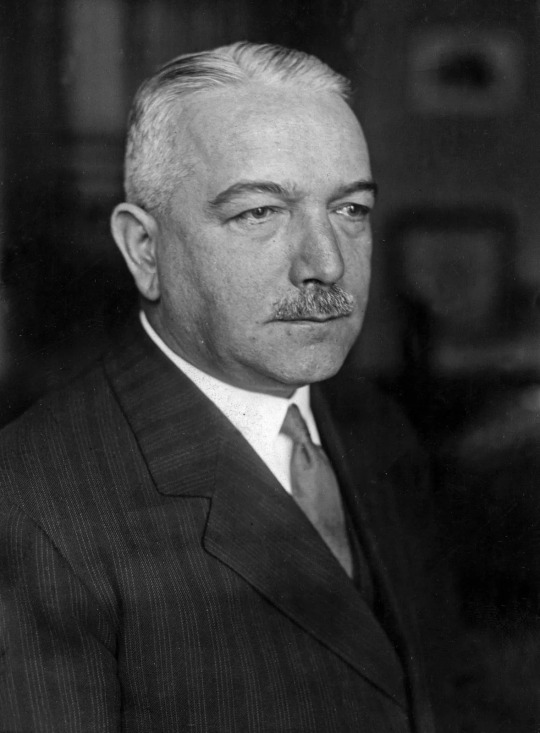
Konstantin von Neurath was a diplomat by career, having even worked for the SPD Weimar president Friedrich Ebert before the rise of the Nazi Party. He is probably most notable for serving as the Minister for Foreign Affairs under previous chancellor Franz von Papen and then under Hitler, a post which he held from 1932 until 1937 from which he was succeeded by the more compliant Joachim von Ribbentrop. He was subsequently made Reichsprotektor of Bohemia and Moravia. He remained a member of the Nazi government until 1943. At the Nuremberg Trials he was found guilty on all four counts, but the tribunal acknowledged that his successor, Joachim von Ribbentrop, was more culpable for the atrocities committed under the Nazis than Neurath was, and so was sentenced to only fifteen years in prison. However, von Neurath was released early on the 6th of November 1954 on the grounds of advanced age and ill health. He died two years later, aged 83.
Prisoner No.4: Erich Raeder

Erich Raeder was the former Grand Admiral and Commander-in-chief of the Navy, prior to the appointment of Karl Dönitz in 1943 after Raeder's resignation. At Nuremberg he was found guilty of Conspiracy to Commit Crimes Against Peace; Planning, Initiating, and Waging Wars of Aggression; and Crimes Against the Laws of War and was sentenced to life imprisonment. Raeder was released early on the grounds of ill-health however on the 26th of September 1955. He died five years later, aged 84.
Prisoner No.5: Albert Speer
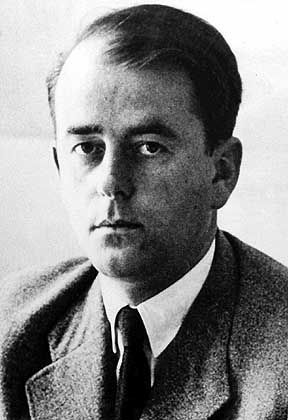
Albert Speer had started off as Hitler's architect. He had been commissioned by many of the Nazi inner circle (including Göring, Goebbels and von Ribbentrop) for the design and construction of new homes for them, as well as the 1934 Nuremberg Rally which is arguably his most well-known work. Speer had a very close relationship with Hitler, with some regarding him as Hitler's "only real friend". In 1942, after a plane crash caused the death of Dr Fritz Todt (which Speer had in fact narrowly avoided himself!), Speer was appointed as the Minister of Armaments and Munitions and held this position until the end of the war. At Nuremberg, Speer was found guilty of War Crimes and Crimes Against Humanity (on the grounds of his use of slave and forced labour). He was sentenced to twenty years in prison (this was the result of a compromise, some of the judges wanted Speer to hang). Eugene Bird described him in his book as "hard-working, pleasant, resigned to his remaining time in prison." During his time in prison, Speer would keep a record of the distances he walked each day as part of his 'world tour', and had claimed to have walked more than 30,000 kilometres. Speer's parents also died during his incarceration. He was released from prison on the 1st of October 1966 and became a media sensation, giving countless interviews (as well as that one Playboy interview). He died in 1981, aged 76.
Prisoner No.6: Walther Funk

Walther Funk was an economist. He was made Reich Minister for Economic Affairs in 1938 and President of the Reichsbank in 1939, and he held both of these posts until the end of the war. In these roles he signed laws that "aryanized" Jewish property and as Reichsbank President he accepted the forwarding of gold teeth extracted from concentration camp victims to be melted down to yield bullion. At the Nuremberg Trials, he was charged with Planning, Initiating and Waging Wars of Aggression, War Crimes and Crimes Against Humanity and was sentenced to life imprisonment. Eugene Bird described him as the "sad clown". Due to failing health he was released on the 16th of May 1957. He died three years later, aged 69.
Prisoner No.7: Rudolf Hess
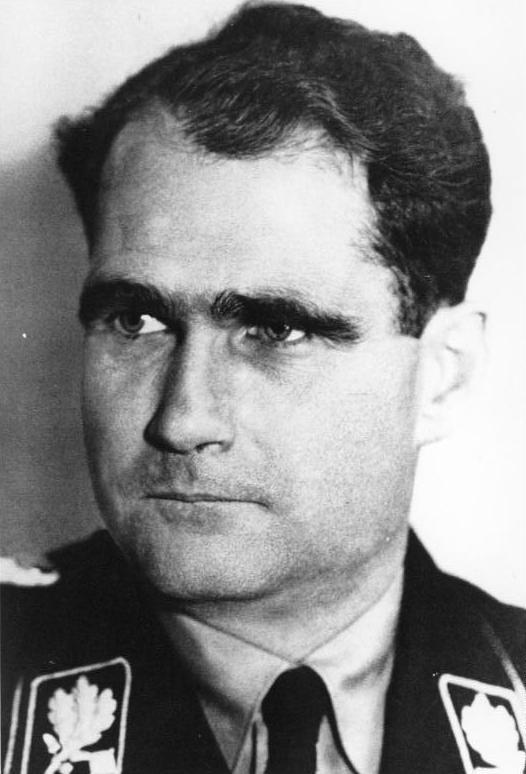
Rudolf Hess was Deputy Führer of the Nazi Party and third in line to the role of Führer (behind Reichsmarschall Hermann Göring) in the event of Hitler's death up until 1941. In May of 1941, Hess took off in a Messerschmitt from Augsburg and flew to Scotland in an attempt to begin peace talks with the British in the Second World War. His attempt massively backfired and was apprehended as a prisoner of war. While in prison, Hess began to show signs of memory loss and would sometimes refuse to eat as he claimed he was being poisoned by the British. At the Nuremberg Trials he admitted that this amnesia was simulated. He was charged with Conspiracy to Commit Crimes Against Peace and Planing, Initiating, and Waging Wars of Aggression, but due to his flight to Britain he was found not guilty of War Crimes or Crimes Against Humanity. He was sentenced to life imprisonment and the Soviets made sure that he would serve out his full sentence. During his time in prison, Eugene Bird had made an attempt to get close to Hess. He described him in his book as "cantankerous", "difficult to manage", and a "problem-child". From 1966 until his death he was the sole prisoner. Although Raeder and Funk (who were also imprisoned for life) were released from prison on grounds of ill health, this was never the case for Rudolf Hess. In late 1969, Hess was taken into hospital for a stomach ulcer and it seemed as though he was close to death. However, despite this, Hess was not released. Support was growing for Hess's release in Germany as well as three of the four allied nations (UK, US and France). The Soviets vetoed every attempt to release him. Rudolf Hess died in Spandau Prison on the 17th of August 1987 at the age of 93, reportedly of suicide, however debate remains as to whether he really committed suicide or whether he was murdered. Shortly after his death, Spandau Prison was destroyed to prevent it becoming a shrine for Neo-Nazi pilgrimages.
#reichblr#rudolf hess#baldur von schirach#albert speer#Konstantin von neurath#walther funk#karl dönitz#Erich raeder#spandau prison#ww2
25 notes
·
View notes
Text
Okay people, here we go:
Baldy's Book Club
Episode 1: "Into the Storm"
By Taylor Anderson, Book 1 of the Destroyermen series.
Okay, so, on the recommendation of my most esteemed mutual @frogblast-the-ventcore , I have been coerced to read the Destroyermen series, and post my thoughts about them as I do.
So, for part 1, here we go. I'm going to assume those of you reading have read the book, cause if you haven't, you should be going to buy it, right now. I mean it.
First and foremost, this book was written by a ww2 nerd, for ww2 nerds, and by god does it show. Taylor Anderson is a professor of history, and it shines through in every part of the book. From the technical details of the USS Walker, to the shortcomings of the Mk. 14 torpedo, to the attitudes, lives, and habits (both good and bad) of a 1942 Asiatic fleet destroyerman. Speaking of which, call me Dean Kamen, cause that's a perfect segway to talk about
The Characters
To begin with, do not expect a normal person's assessment of these characters. Expect a Normal™ person's view of them.
First: Captain Matthew Reddy. Oh my lord this man. He's an absolute mess, knows it, and yet cannot let that show, because, well he's stranded in an alternate universe with humanoid lemurs and sapient velociraptors. In my head, he's got total divorced dad energy going on, 30-something going on 50 because of stress, greying at the temples but still hot in a DILF kind of way, not overly muscular, and with one hell of a voice. (I'll admit the audio book colored my perception, but it's a fantastic audio book so I don't care.)
Next, Chack-Sab-At, the biggest and most baddass guyfailure to ever live. "Oh, I'm a pacifist" then the very second that an enemy without moral repercussions comes along he's all "I love violence and killing and murder and death and injuring people and blood and biting and cutting and-" like, seriously, dude says he's a pacifist before turning around and becoming Furry Doomguy.
Next, Dennis Silva, he-who-was-told-not-to-fuck-the-monkey-cats-but-did-it-anyway. Moving on,
There's literally more I love about the characters than I want to sit here and type out, so I'm going to cut it short, but Oh My God these characters are A+.
Next, I just want to touch on something these books made me feel. A lot of times, as an USAmerican with an actual brain, I can get bogged down in the fucked-up shit my country has done and feel like I can't celebrate what makes the US cool without making it sound like I'm excusing all the bad stuff, but this book kinda made me stop for a minute and go "man, the US is kinda fucking rad, when you think about it." Because, you know what? It is. Yeah, we've done fucked up shit, but we've also done some pretty awesome stuff. For every My Lai Massacre, there's a moon landing. For every Trail of Tears, there's a Berlin Airlift. Sometimes, it's okay to take a moment and just go "Fuck yeah, guys. Were pretty cool." Because this book really makes you feel that, at least it did to me, but I'll get off my red, white and blue high horse and keep going.
Alright, now we come to the part that I need to get out...
THE BRITISH EAST INDIA COMPANY
Literally everywhere in my life, I am haunted and stalked by the specter of a long-dead megacorporation. In every piece of media, in every topic I research, no matter what, they're there. As the Frogman quoted from me in a meme a while back "I'm being haunted by the ghost of English imperialism". What the fuck? Anyway, if you wanna chat about the book, please do, because I am at terminal levels of Fandom.
Anyway, if you want to read along for the next Baldy's Book Club, we'll be reading Crusade, the next book in the Destroyermen series.
(P.S. Frogman, I know this review isn't very good, but my brain is soup rn so this is whatchu get.
8 notes
·
View notes
Text
How to build a character
Step 1: Come up with 2/3 central concepts for the character based on what sounds interesting to you at that moment
Example: Reverse 1999, 1940s in Europe, logistics with magic Step 2: How do those things fit together. Think of some plot that fits those things together. Example: An arcanist in the berlin airlift realizes they have the choice to remain hidden and safe, which is what kept them alive previously, or to step forward and use their abilities to make life better for everyone around them Step 3: play around in that setting for roughly 1-2 weeks
step 4: put those bitches away for a while. let the rotisserie oven rotate step 5: welcome back. Go back to step 1. do you still like all of those concepts? If not, swap out 1 of them. if you do, add one.
Example: Reverse 1999, 1940s in Europe, logistics with magic, trains step 6: fit them together again. your concepts should be broad enough you can put them together a second way Example: The home army needs weapons for the upcoming uprising. Everyone needs food. Not all the dead have anyone to bury them. A train's purpose is to move goods, people and those that once were. Welcome aboard members of the Foundation, the train will be making a few stops. You should get off before we reach the terminus. Step 7: once again fuck around with that for a few weeks. in this specific example I started planning a fanfic at this stage but tried to frontload all of my planning so i'd burn through it and not get myself in for a 40k+ fanfic idea to abandon part way through again. Step 8: put those bitches away for a while. let the rotisserie oven rotate Step 9: repeat steps 5-8 as many times as needed. current character: Reverse 1999, Post WW2 in europe, magic trains, trains as a way to move the dead, soothing others as a way to try to soothe yourself A stolen train rolls into town. It is empty. Save it's driver. She climbs down from the train. She has a list of its passengers. She asks if any of them lived in this town. You answer no. She asks for a few more people you don't recognize, family, she assures you. You can not help her. She promises to return with more souls to put to rest. She climbs aboard once more. The train rolls out of the station. Silently. The engine isn't on. + The foundation's number has swelled with orphans. It's your job to comb the records and count the dead. A tentative step back into a region arcanists had been exterminated from not 6 months ago. It's quiet work. It's quiet. You somehow do not hear the approach of a train. This train isn't carrying people to the camp though. No, the sole person in the train seems to be interested in bringing them back. You attempt to ensure her they are dead, they can not return unless she plans on exhuming the graves... which is probably illegal. She smiles tiredly, insisting that numbers on a report aren't what people need. The dead need to be brought home for the living to grieve. You aren't sure if she's gone mad or if the people she is talking to actually respond. You climb aboard a stolen train.
2 notes
·
View notes
Text
Ash Decade Timeline of the Past Century+:
1900's: 1901 to 1914 - Death of Queen Victoria to WW1
1910's: 1914 to 1922 - WW1 to the fall of the Ottoman Empire & the founding of the USSR, aka "the death of the old order"
1920's: 1922 to 1929 - Roaring Twenties & the post-war stabilization to the Great Depression
1930's: 1929 to 1939 - Great Depression to the WW2
1940's: 1939 to 1949 - WW2 through the establishment of the post-war order, founding of PRC/Berlin Blockade and the full blooming of the Cold War
1950's: 1949 to 1963 - Cold War start through Death of JFK/Civil Rights movement
1960's: 1963 to 1973 - Counterculture movement through the end of the Vietnam war
1970's: 1973 to 1980 - Counterculture fissile/stagflation to the election of Reagan
1980's: 1980 to 1991 - Reagan to the dissolution of the USSR
1990's: 1991 to 2001 - End of the cold war/Pax Americana to 9/11
2000's: 2001 to 2009 - War on Terrorism through to the Great Recession
2010's: 2009 to 2020 - Obama's America & its Discontents/The Online Era through to Covid
And the 2020's began in February of 2020.
Related concepts of course include the "Long Nineteenth Century" - 1789 to 1914, and the 20th century being from 1914 to 1991 (or 2001, but not my preference) All of this is generally from an American perspective outside of when global events swamped them, as happens at times. Other countries would have other times (like if you are Germany or Japan, 1945 is a hard break in your history, tough for decading). And the events are actually a bit deceptive, often being downstream of the wider culture/vibe shifts that are really changing things around. Some of these I could +/- a year on, but overall I think its solid.
20 notes
·
View notes
Note
🍋 here's a lemon for you, have fun :3
Time to post about:
Karl Fairburne from Sniper Elite series


Yes I have a type, I've noticed.
There's very little to know about Karl. Outside of his work of sniping nazis and other threats. We do know he's British American with German ancestry and studied & lived in Berlin before WW2 broke out. He fought against Italian army, was in Africa, fought against zombies apparently?? He's seen the world. It's interesting how he does everything solo as that's incredibly dangerous but he manages just fine.
He's bit too similar to Blazkowicz which is why I haven't FOd him. Both of them are military men who wear wool & fight in resistance.
There's so little to know about him I can't work with him to create narrative. My self ships needs story & narrative.
2 notes
·
View notes
Text
THE LAST STAND OF THE GUARDS

The Gulf War’s Ground Campaign and Iraqi Resistance
Good day everybody! Since I loudly declared I would be leaving Twitter until the Afrikaner rodent was dead or missing, I felt I should post this pet-project of mine here instead of on Twitter as a thread.
The Gulf War, at least in its political aspects, was a modern iteration of the Battle of Waterloo, as it represented the decisive military triumph of reaction over progress and development. It was, as Victor Hugo once described Waterloo, “intentionally a counter-revolutionary victory”. It was Iraq against the status-quo. It was the revolutionary Arabism of Baghdad against the triumphant imperialism of Washington D.C, the reactionary backwardness of Riyadh, the comprador-ship and treacherous realpolitik of Cairo and Damascus. The final extinction of that vast people which had been in eruption for thirty-five years, since 1956–such was the dream.
However, that is not what I will be talking about today. See, as much as I would like to delve into the political & historical consequences of this great war, I wish to cover its military details, unlike what Hugo did with Waterloo. Today, I shall be focusing of the Coalition’s ground offensive and the Iraqis’ doomed attempt at resistance. So let’s set the scene.
Bombs over Baghdad and Gorbachev’s Deal
A month has passed since the Coalition started its massive air campaign over the skies of Iraq. A vast armada of close to 2.800 jets and hundreds of cruise missiles hit Iraq’s industrial centers, civilian infrastructure, energy production facilities, even research reactors, with the goal of quite simply returning Iraq, until then the Middle East’s sole modern economy, back into the stone age. More bombs were dropped on Iraq in a month than were dropped on Berlin, Germany’s capital, throughout all of WW2. The Coalition had more or less proven its point, and Iraq wanted out.
An agreement was reached with the Soviet Union, with the hopes that this would present a fait accompli to the Coalition and have them cease the bombings (and hopefully even end the sanctions). According to this agreement, Iraqi ground forces would immediately begin pulling out their units from the “Kuwaiti Theatre of Operations”, with the last units leaving in around a few weeks. In fact, a shadow retreat was already being allowed to happen, with individual divisions ‘melting away’ and reconstituting themselves back in Baghdad. With Tariq Aziz (Iraq’s Deputy PM & Foreign Minister) announcing Gorbachev’s deal and the pullout of all Iraqi forces from the KTO on the radio on the 22nd of February, this shadow retreat suddenly turned into a large and chaotic movement of units still under air attacks, with large traffic queues and more-or-less total abandonment of all Iraqi defensive works which had been prepared in the south of Iraq as well as inside Kuwait (like the well-known “Saddam line”).

As Iraqi troops were hastily withdrawing from their prepared defensive positions and clogging up the vast road networks of Iraq and Kuwait with huge lines of trucks, heavy vehicle transporters, tanks and other military equipment, the Coalition knew it had to act fast. The conclusion of the Gulf Crisis through Soviet mediation and without a crushing defeat of the mass of the Iraqi military was considered an unacceptable result, and thus plans were quickly drawn up to lunge forward at the retreating enemy columns and shatter the mass of the Iraqi military as it was attempting a cumbersome and chaotic march back towards Baghdad, Karbala, Najaf and Basra.
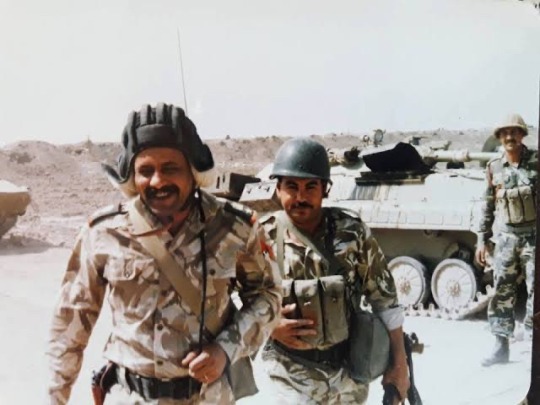
The first Coalition attacks struck (and quickly scattered) vastly outnumbered and confused stragglers from infantry divisions which had been attempting to withdraw from their prepared defensive fortifications. After quickly dealing with these minor centers of resistance, the Coalition units started a large-scale ground offensive relying on shock and speed to either cut off the retreat of Iraqi units on the road or to hit them from the behind and shatter them. Iraq’s military leadership, after shaking off the violent shock of the ground attack (and in their eyes, from the shock of Gorbachev’s betrayal), made the hard and rational, yet arguably callous, choice of ordering their armored-mechanized Republican Guard formations to immediately turn 180 degrees and lunge forward towards the Coalition offensive to either meet them in hastily and rather shoddily improvised defensive positions or to counter attack them with the purpose of delaying their general advance, so the rest of the 50 division strong Iraqi military could withdraw back to Iraq relatively unscathed. With great difficulty, these ‘elite’ formations were able to extract themselves from the large traffic jam which had almost entirely paralyzed the movement of panic-stricken Iraqi units and prepare themselves for the coming battle. This would be their last stand, for they were the modern iteration of Napoleon’s Old Guard, who had been cut down by British musket fire yet fought until destruction, to the bitter end.
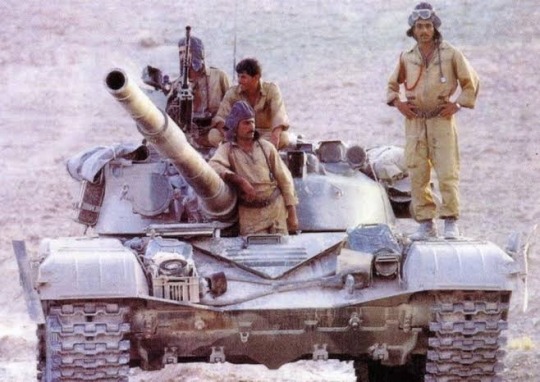
Although the Republican Guard had been the preferred target of continuous Coalition air attacks from the outbreak of the war, they had not suffered serious losses due to their safety precautions and effective camouflage procedures. In an interview, a Republican Guard commander claimed that despite attacks from the most advanced planes at the Coalition’s disposal, his forces had suffered relatively few losses. In fact, attacks by A-10 aircraft would have to be called off for the rest of the campaign after suffering significant losses due to RG operated Strela-10 SAM systems.
When the ground offensive got underway on the 24th of February, the Coalition forces stepped up their bombing campaign on the Republican Guard, using large numbers of aircraft and combat helicopters that attacked them constantly. To make sure his units could set up mutually supporting defensive lines in the chaos of the 180 degrees turn and expected attacks by the Coalition’s tank forces, the commander of the Republican Guard decided to transfer the ‘Tawakalna’ RG Division to rear positions in order to close the gap between the ‘Adnan’ and ‘Al-Medina’ RG Divisions.
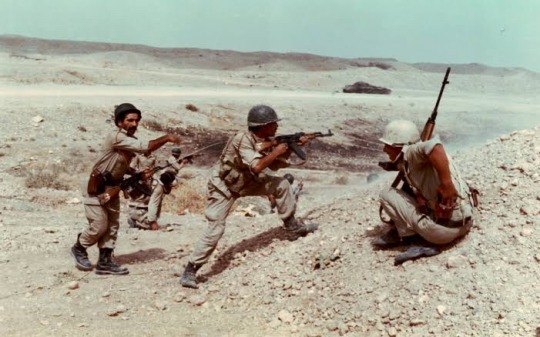
‘Mother of All Battles’
On the division’s way to its new position, they suffered an air attack followed immediately by an extensive armored assault in which 3 divisions from the American 7th Corps took part, with massive air support. The battle - known as ‘Battle of 73 Easting - was fought mainly between elements of the ‘Tawakalna’ Division and forces from the US 1st and 3rd Armored Divisions, the 1st Infantry Division and 2nd Armored Cavalry Regiment. American artillery and MLRS batteries played an important role in the battle.
The ‘Tawakalna’ Division fought an incredibly hard battle in difficult visibility conditions due to heavy dust that was stirred on the sandy terrain. Some of its formations were badly damaged but the division succeeded in reaching its rear positions, ending its participation in the war. Parallel to this, the Americans also attacked the lines of the ‘Nebuchadnezzar’ and ‘Adnan’ RG Divisions, even succeeding penetrating the Iraqi defensive lines on the morning of 27 February. As a result of the withdrawal and partial destruction of the ‘Tawakalna’ Division, Republican Guard Commander Gen. Iyad al-Rawi ordered the ‘Hammurabi’ RG Division to advance its 17th Armored Brigade to occupy new positions on the border between the sectors of the ‘Adnan’ and ‘Al-Medina’ Divisions.
The brigade moved to its new positions followed by 2 additional mechanized brigades and prepared for a counter attack. According to their version, the Iraqis sought a confrontation with the Americans advancing towards them from the West, and all of the Republican Guard’s artillery units bombarded American positions for over 3 hours. Next, the 17th Armored Brigade along with 21st Commando Brigade attacked in the sector of the ‘Adnan’ Division in Rumelia and managed to push back the forces that had occupied the defensive positions of one of its battalions. The ‘Adnan’ Division was later instructed to move in the direction of al-Qurna.
Another clash occurred between forces of the ‘Al-Medina’ Division and the American 7th Corps on the night of 26-27 February, after the latter attacked the Iraqi 14th Mechanized Brigade. The division mounted a counter attack with its 2nd Armored Brigade, reinforced by additional battalions, forcing the enemy to withdraw its forces to the rear. As a result, the American forces in the area increased their artillery fire in order to block the Republican Guard forces, who were attacking relentlessly and even making minor advances in some sectors.
The American 1st Infantry Division, which tried to advance across the sand dunes to flank the Iraqi line from behind, got stuck in this area, becoming a target for Iraqi artilllery and retreating helter-skelter from the area. At that point, forces from the ‘Hammurabi’ Division arrived in force in the sector between the ‘Adnan’ and ‘Al-Medina’ Divisions, deploying to mount a counter attack along with the ‘Al-Medina’ Division— a move that had the potential to threaten and encircle forces from the American 7th Corps in the Iraqi view.
While all this was taking place, forces of the US 18th Corps attacked the Special Forces Division of the Republican Guard in the Nasiriyah sector. An American force the size of a brigade (from the 101st) was also operating inside Iraqi territory in the Basra-Nasiriyah axis. The corps’ forces (82nd and 24th Divisions) mounted a frontal assault on the Iraqi positions from the south and west, attempting to gain control over them. Brutal fighting developed and continued throughout the day and into the night of 26-27 February, with the Iraqis, supported by heavy artillery fire, demonstrating very stubborn fighting spirit. In the end, the attack was stopped by the resistance of the Special Forces Division and by the heavy fog which covered the entire area.
Post-Battle Assessment

The Iraqis viewed these two battles - of the ‘Hammurabi’ and ‘Al-Medina’ Divisions and of the special forces in the Nasiriyah area - as a great victory for the Republican Guard, which had warded off a combined attack of two American corps on Basra and Southern Iraq. In their eyes, these developments, along with the 7th Corps’ failure to slice through the lines of the Republican Guard’s armored forces, had prevented the Coalition forces from taking control of Southern Iraq, destroying the mass of the retreating Iraqi military and/or disrupting their withdrawal back to Iraq. They portrayed the battles conducted by the Republican Guard as being among the greatest armored battles fought in modern history since WW2 in terms of the size of the formations and the number of armored vehicles taking part.
In their eyes, they had at least temporarily succeeded in effectively defending against and pushing back various American assaults, and even partially enveloping the American 1st Infantry Division, albeit very briefly. They concluded that the American High Command’s concerns about the 7th Corps taking further casualties and even being pushed back by the ‘Hammurabi’ and ‘Al-Medina’ Divisions caused them to agree to a ceasefire on the 28th of February and to put an end to the fighting. However, the Gulf War as a whole caused horrendous losses to Iraqi ground forces, who according to statistics from the USAF lost 2.500 tanks, 1.500 APCs, and 2.200 artillery pieces to enemy ground and air fire. However, later studies of Iraqi casualties during the war have shown them to have taken around 15.000 to 25.000 casualties, indicating that the RG had, in the end, succeeded in its task of sacrificing its own armored-mechanized brigades and divisions to allow the mass of the Iraqi army in the KTO (around 900.000 men) to retreat relatively unscathed back into Iraq. These forces, as well as the remnants of the RG, would prove pivotal in the Iraqi government’s response to the uprisings and mass-infiltration attempts of 1991.

Thanks for your attention! For further reading I would recommend Majid Khadduri’s “War in the Gulf”, the “Iraqi Perspectives Project” article covering the Gulf War, Pesach Malovany’s “Wars of Modern Babylon” and lastly the article “Correcting Myths about the Persian Gulf War: Last Stand of the Tawakalna Division”.
12 notes
·
View notes
Text
It deserves its own post
Public education in the US is riddled with commies and either bias pro-Russia shills or aggressively neutral in Russia's favor. Tankies are rife in our education system, and they use the power of omission and obfuscation to make sure book sources that are inconvenient to their preferred ideology remain buried under dross, the books remain inaccessible, or make the lowest hanging fruits books that talk at length and ad nauseum exclusively about the racism, colonialism and exploitation of minorities by Western Europe.
This is why gradeschoolers and highschoolers state-side tend to go from their first year of school to their pre-university/college years, not really formally learning a damned thing about Russia's dirty laundry and how it treated its neighbors outside of the context of Poland in WW2, Czchloslovakia getting a single mention (guess why) and East Germany.
The people that used to whoop up the Soviet Union as a beacon of tolerance and progressive, race neutral, rational policy (in contrast to the religious fundamentalist, white supremacist, patriarchal west) would filibust and aggressively segue conversation away from anything even broaching or approaching Russia's ethnic cleansing, "Russification" or conquering of North and Central Asian territories and populations. They couldn't go a day without seeing every opportunity to make little zingers mocking people like founding fathers and historical western figures as just being irredeemable, racist, sexist, horrible old white men (everything they saw wrong about the west) but if you surprised them by making similar comments about shitty things the Imperial Russians or even worse, the Soviets were doing, then they'd grouse and take it personally and aggressively try and change the subject so it stopped being the topic of conversation, and fewer people heard it, internalized it and repeated it.
We had Nazis doing these social techniques in the states before them, too. Little, "Jokey jokes" insinuating the Jews were just conspiracist ethnosupremacists plotting to take over the world and subjugate all non-Jews, how they were terrible, this that and the other. Trying to just randomly interject these comments as if they were common and true enough in reality to be obvious and fact. But, it was deliberate social propaganda. And eventually, got called out.
Soviet Sympathizers were a special breed of viral memers before meming was a thing, though. You've heard of the Grass Roots? Well, Marxist sympathizers doing the cultural guerilla thing were like astro turfers. People that just as par for the course of their ideology knew how propaganda and media worked, so rather than respect people and not abuse it, decides the correct course of action was to use said platforms and media sources to propagandize for their own purposes, while lamenting that which was not their ideological platforming was propagandizing, and "calling it out."
They went into remission and hiding after the Berlin Wall fell and kind of slid in to mourn among the goths throughout the early 90s, but they never went away entirely.
2 notes
·
View notes
Text
••••••••••••••••••••••••••••••
I have a different recollection the change to America.
The voter base began revising the Party makeup in the post -Vietnam 1970s.
Hyperpartisanship followed with the formal realignment of the two Parties in the late 1980s.
Nationally elected Conservative Democrats (largely from the Southern States) switched Parties to follow the party ngoing white white-collar suburban middle class and urban white blue-collar voters’ migration to the Regan version of the Republican Party.
This ended the Democratic Party’s essential lock on Congress from 1932 to 1986. In which Liberal Democrat Presidents and Centerist Republican Presidents worked with a Congress that operated based less on Party and more on regional and economic bipartisan caucuses.
In the next five years the Soviet bloc evaporated and along with the Cold War paranoia which served as a ‘stand together or fall separately’ unifying mantra.
I think we’d lost unifying threats against the Society as a whole: Great Depression, WW2, hot (Korea/Vietnam) and cold (Berlin crises/Cuban Missile Crisis) paths to nuclear oblivion.
The post-Roaring 20s order fell. Reignited the cultural war of 1900-1929.
Once again on one side the traditional/familiar, self segregating ethnically/religiously & by accents, strangers go home, largely rural hierarchical Church & Settler culture’.
On the other morphing/diverse, secular, Urban liberal, new-to-town ethnically mixing-pot, polyglotal, nonconformist, strangers welcome and bring your recipes, egalitarian evolving culture.
2 notes
·
View notes
Text
A Grave(s) in Berlin
Recently, I had the opportunity to visit the Sophienkirche in Berlin-Mitte, a hidden baroque treasure tucked away behind a row of grey 19th century houses whose walls still bear the scars of WW2.

Exterior of the Sophienkirche.
Those of you who have read my post on early modern ghost hunts will recall the fate of Sophie Luise zu Mecklenburg-Schwerin, third wife of Friedrich I., King in Prussia, from whom the church receives its name. At first, following her having been sent away from the Prussian court on account of an incident in which she, unaware of her surroundings due to her mental illness, had barged into her dying husband's bedroom covered in blood, the church was dubbed Spandauische Kirche according to its location in the Spandauer Vorstadt (Spandau Suburb) quarter. Curiously, Friedrich Wilhelm I., de facto stepson of Sophie Luise, had the name changed to its originally intended name Sophienkirche (Sophie's Church) a few years later.
Its tragic patron aside, the church can boast a few more celebrity connections: on 13 September 1964, Martin Luther King preached in the church on a surprise visit to East Berlin.

Interior of the Sophienkirche, viewed from the altar room.
But while I am always one for the particular charm of Prussian baroque architecture, another object of interest is located in the former churchyard.
The grave of Leopold (1795–1886) and Clara (1808-1871) von Ranke and their youngest son Albrecht (1849–1850) is easy to miss, seeing as it is located in a part of the former church grounds that has in recent history been converted into a playground for the church-owned kindergarten (am I a tad jealous that my run of the mill kindergarten did not have a playground with historic monuments in it? Absolutely.) and quite overgrown, which is a shame, considering the significance of Leopold and Clara.
Leopold von Ranke was a leading historian of the 19th century, often credited with shaping history as a scholarly discipline as we know it today and his wife Clara (Helena Clarissa, though she seems to have preferred the nickname Clara) was a leading salonnière in mid-19th century Berlin.
Having grown up academically in the shadow of Leopold, it is Clara who has captivated my interest. Helena Clarissa von Ranke, née Graves, was a member of the family I research and sometimes post about among the more light-hearted content. For those of you who do, suffice to say that Clara's great-great-grandfather Henry "Claymore" Graves and Admiral Samuel Graves's (the man around whom most of my research revolves) grandfather James John Graves were brothers.
Born in Dublin in 1808, Clara met Leopold von Ranke in Paris in July of 1843. They married the same year and moved to Berlin together, where the Rankes were renowned for their salon, visited by foreign and domestic intellectuals alike, two of the most famous of whom may have been the Brothers Grimm.
Historically, most of the historiography concerning the von Ranke family has mainly focussed on Leopold, and Leopold's work; which seems natural enough, given his importance to history as a modern academic discipline, but leaves out Clara's equally important role as her husband's equally academically-versed aide (among other things, she was competent in the use of 20 languages, half of whom she spoke fluently and sometimes did translations of Leopold's work into English) without whom a lot of his work would not have been quite so easily possible, an influential salonnière, and most importantly, a woman with literary ambitions (she was a poet, though found having her works published rather difficult), views and opinions on the politics of her time.
This is particularly vexing seeing as their granddaughter Ermentrude Bäcker-von Ranke was, according to different sources, either the first or second woman in Germany to study history and obtain a doctorate. Luckily, this changed in 2012 when Andreas Boldt's The Clarissa von Ranke Letters and the Ranke-Graves Correspondence 1843-1886 was published, allowing for a greater insight into Clara's everyday life as an integral and beloved part of the extended von Ranke family, her political opinions and friendships with influential people such as, to give only one example, Florence Nightingale.
While the Rankes were politically on a conservative spectrum in Germany, Clara maintained a keen interest in Irish politics and expressed her desire for a peaceful coexistence of Catholics and Protestants in the country.

The grave of Leopold and Clara von Ranke, viewed from a flowerbed on the other side of the fence.
I wish I could enclose a better picture of the von Ranke grave; alas, it now being situated in a kindergarten playground, there was no way to access it; a lovely lady who I believe was of the church's friend's association was however so kind as to, after checking for the keys to the gate and not finding them, give me the telephone number of the parish office, with whom a closer look at the grave might be arranged. A few pictures on Wikipedia indicate that they occasionally let people visit the premises, so I am hopeful that I might be lucky. Next time I am around, I might try and call them- stay tuned!
#graves family#leopold von ranke#clara von ranke#19th century#british history#irish history#german history#sophienkirche#berlin#history#my pics#my photography
11 notes
·
View notes
Text

Hello there, fellow reader!
Thank you so much for opening this thread! We hope you’ll be thrilled to read this AU and leave a note. But before reading this blog/post, we’d like to clarify some things about this AU that might be questioned, since it’s called “World War II AU”
●┋We do not support any political ideologies mentioned throughout the blog.
This AU is mostly if not entirely based on the actions taken in 1945, more specifically during WW2 in Europe. We can’t change history and we don’t want to change anything in this au for the simple reason it wouldn’t be accurate, and would not be a WW2 alternative universe but more of a rip-off parody.
●┋ Everything happening in the AU is fake
Excepting historical events (the Berlin battle, the Holocaust etc), all of the actions written are fake and did not take part in history. This au is mainly based on historical events, but the story in general does not relate to any real event or story.
●┋We do not support racism, homophobia, sexism, ableism etc
All these ideologies were a part of history - which as we said before it can’t be changed. In real history, these beliefs were in its best state in 1945, especially in Germany. All this does not mean we meant to insert any of the ideologies.
Therefore some events and dialogues in the au might be triggering!! This blog also shows as accurate as possible the events occurring back then to people, which is indeed triggering.
●┋This AU is a parody and should not be taken seriously.
→ About the AU / Info
The writing style is based on the au “ Hell Park”, and so is the art style - it has absolutely nothing to do with that certain AU. It is simply the fastest and easiest method we found to show the blog, and to draw the images.
We are completely aware that some details in this au (designs, backgrounds etc) might not be 100% accurate to history, it is all information took from the internet. For example, some uniforms might not match the actual historical uniform, since we didn’t find any official documentation - so please let us know if anything is wrong!
As a side note, check our Instagram for blog updates. (There is also posted the AU, though, we recommend you read it on tumblr)
4 notes
·
View notes
Text
Ranting about my original gay ww2 book I’m working on:
So there’s Theodore, Theo for short, who’s from SF. He’s a young jewish nerd who’s the son of immigrant parents from Germany. He speaks english, yiddish, and german. He’s the de-facto translator for this group (more on the group later).
Then there’s Max, who’s from NYC. He’s a born and bred Brooklyner. He has a strong brooklyn accent, and he’s very defensive about New York bagels. He’s an infantryman in the same group as Theo.
In the book, Max and Theo meet when they’re assigned to the same crew. The crew is working to liberate france, and it follows their battles/experiences as it happens.
The book itself will talk about queer life within the American army, queer life in the 1940s, queer life in Berlin pre-war, antisemitism, and judaism. Theo, being jewish, has a different tie to the war because of that.
I’m may post some little snippets I’m working on that won’t leave me alone, but for now, that’s my idea!!!
2 notes
·
View notes
Text
listen considering how I post on here lately if I was truly endlessly self-indulgent I would say well Kubo didn't really specify what kind of beasts he was just using that particular word figuratively to mean all animals and Yoruichi's beast mode based on her history could quite literally be:

Kubo didn't say what happened to Berlin in WW2, you don't know, it's free real-estate
(also yes this is actually a thing Marvel did which I inflict knowledge of upon you, his name is Todd Ziller, AKA "American Kaiju")
3 notes
·
View notes